#machine learning tutorial for beginners
Explore tagged Tumblr posts
Text
Mastering SVM in Machine Learning: A Beginner-Friendly Tutorial
If you’ve been wandering the wilds of machine learning long enough, you’ve probably run into the acronym SVM. Maybe you nodded along in that one meeting, pretending to know what it meant. Or maybe you do know, but every time someone says “support vector machine,” you mentally file it away as “that one with the margin thing.” Well, today we’re putting an end to the mystery. In this tutorial,…
0 notes
Text
#AI Career#BCA to AI#Machine Learning for Beginners#Python for AI#AI Projects Portfolio#Data Science Fundamentals#TensorFlow Tutorials#Deep Learning Essentials#AI Internships#Building AI Resume#AI Communities & Networking#Math for AI#NLP Projects#Image Recognition Guide
0 notes
Text
Leveraging SAS Tutorials for Mastering AI and Machine Learning Applications
The fields of Artificial Intelligence (AI) and Machine Learning (ML) are rapidly transforming industries by enabling data-driven decision-making and predictive analytics. For those with a foundation in SAS programming, delving into AI and ML through specialized SAS tutorials can open new avenues for professional growth and innovation.
The Intersection of SAS and AI/ML
SAS has evolved to incorporate AI and ML functionalities, particularly through platforms like SAS Viya. This integration allows users to build, train, and deploy sophisticated models within the familiar SAS environment. Understanding how to navigate these features is crucial for leveraging the full potential of SAS in AI and ML applications.
Educational Pathways
To master AI and ML using SAS, consider engaging with the following educational resources:
Machine Learning Using SAS Viya Course: Offered on Coursera, this course provides an in-depth exploration of machine learning techniques within SAS Viya. It covers topics such as data preprocessing, decision trees, neural networks, and model assessment, offering practical experience through hands-on assignments.
SAS AI and Machine Learning Courses: SAS offers a range of courses tailored to different proficiency levels, from AI literacy for beginners to advanced machine learning for professionals. These courses are designed to build a comprehensive understanding of AI and ML concepts within the SAS framework.
Practical Application of Tutorials
Engaging with these SAS tutorial enables users to:
Develop Predictive Models: Learn to create models that can forecast outcomes based on historical data, aiding in proactive decision-making.
Implement Neural Networks: Gain insights into building neural network architectures for complex pattern recognition tasks.
Assess and Deploy Models: Understand methodologies for evaluating model performance and strategies for deploying models into production environments.
Advantages of SAS-Based AI/ML Learning
Pursuing AI and ML education through SAS offers several benefits:
Integrated Environment: SAS provides a cohesive platform where data management, analysis, and model deployment can occur seamlessly.
Industry Recognition: Skills acquired through SAS are highly regarded in industries such as finance, healthcare, and government.
Comprehensive Support: SAS offers extensive documentation and a supportive community, facilitating continuous learning and problem-solving.
youtube
Conclusion
For individuals proficient in SAS programming, expanding expertise into AI and ML through targeted SAS tutorials is a strategic move. It not only enhances analytical capabilities but also positions professionals at the forefront of technological advancements, ready to tackle complex data challenges with confidence.
#sas tutorial#sas programming tutorial#sas programming#sas tutorial for beginners#AI and Machine Learning#Youtube
0 notes
Text
Master Your Serger and Overlocker with the #1 Online Sewing Course!
Master Your Serger and Overlocker with the #1 Online Sewing Course! Tired of tangled threads, skipped stitches, or confusion over your serger’s settings? Whether you’re a sewing enthusiast or a professional looking to refine your craft, The Number 1 Serger and Overlocker Online Sewing Course is your ultimate guide to mastering these powerful machines. Say goodbye to frustration and hello to…
#advanced serger techniques#beginner serger course#best online sewing course#cover stitch mastery#decorative serger stitches#DIY sewing projects#fabric-specific serger skills#learn to use a serger#lifetime sewing access#online sewing classes#overlocker online classes#professional seam finishes#save time sewing#serger hacks#serger maintenance guide#serger sewing course#serger tension settings#serger video tutorials#serger vs overlocker#sewing community forum#sewing course enrollment#sewing machine troubleshooting#sewing machine tutorials#sewing tips for beginners#threading a serger machine
0 notes
Text
Things I wish I had read in "beginner" sewing tutorials/people had told me before I started getting into sewing
You have to hem *everything* eventually. Hemming isn't optional. (If you don't hem your cloth, it will start to fray. There are exceptions to this, like felt, but most cloth will.)
The type of cloth you choose for your project matters very much. Your clothing won't "fall right" if it's not the kind of stretchy/heavy/stiff as the one the tutorial assumes you will use.
Some types of cloth are very chill about fraying, some are very much not. Linen doesn't really give a fuck as long as you don't, like, throw it into the washing machine unhemmed (see below), whereas brocade yearns for entropy so, so much.
On that note: if you get new cloth: 1. hem its borders (or use a ripple stitch) 2. throw it in the washing machine on the setting that you plan to wash it going forward 3. iron it. You'll regret it, if you don't do it. If you don't hem, it'll thread. If you don't wash beforehand, the finished piece might warp in the first wash. If you don't iron it, it won't be nice and flat and all of your measuring and sewing will be off.
Sewing's first virtue is diligence, followed closely by patience. Measure three times before cutting. Check the symmetry every once in a while. If you can't concentrate anymore, stop. Yes, even if you're almost done.
The order in which you sew your garment's parts matters very much. Stick to the plan, but think ahead.
You'll probably be fine if you sew something on wrong - you can undo it with a seam ripper (get a seam ripper, they're cheap!)
You can use chalk to draw and write on the cloth.
Pick something made out of rectangles for your first project.
I recommend making something out of linen as a beginner project. It's nearly indestructible, barely threads and folds very neatly.
Collars are going to suck.
The sewing machine can't hurt you (probably). There is a guard for a reason and while the needle is very scary at first, if you do it right, your hands will be away from it at least 5 cm at any given time. Also the spoils of learning machine sewing are not to be underestimated. You will be SO fast.
I believe that's all - feel free to add unto it.
39K notes
·
View notes
Text
Beginner's Guide to Data Science with Python: A Step-by-Step Tutorial
Beginner's Guide to Data Science with Python: A Step-by-Step Tutorial
Introduction Data Science is a rapidly growing field that combines domain expertise, programming skills, and knowledge of mathematics and statistics to extract meaningful insights from data. Python, with its powerful libraries and ease of use, has become the go-to language for data science. This guide aims to provide a step-by-step tutorial for beginners to get started with data science using…
#Beginner&039;s Guide#Data Analysis#Data Science#Data Visualization#Machine Learning#Python#Tutorial
0 notes
Text
#AI Mastery course online#Learn AI for students#Online artificial intelligence course#AI training for beginners online#Advanced AI course for students#Best AI courses online#AI certification for students#Artificial intelligence classes online#AI courses for college students#AI and machine learning training#Online AI development course#AI programming course online#AI deep learning online course#Top AI courses for students#AI specialist training online#Best online course for AI mastery#Artificial intelligence for beginners online#AI algorithms course online#Machine learning basics online#Online AI projects for students#Introduction to AI online course#AI ethics course online#Online AI tutorials for students#AI and data science online course#Online AI bootcamp for students#Best AI training program online#AI career path online#AI masterclass online#Online AI education for students#AI technology course online
0 notes
Photo

Cricut for Beginners - Do you have a new Cricut Machine? Learn how to use your new Cricut TODAY! Fast and easy tutorials that will get you started now.
#Cricut#for#Beginners#-#Do#you#have#a#new#Machine?#Learn#how#to#use#your#TODAY!#Fast#and#easy#tutorials#that#will#get#started#now.
0 notes
Text
youtube
AI vs HUMANS |Shaping Humanity's Destiny or Threatening Identity | Darryl Omar
AI continues to advance, some view it as a powerful force that can propel us into a brighter future, enhancing our lives and solving complex problems. However, others express concerns about the potential threats it poses to our very identity and existence. Join us as we examine the promises and perils of AI, inviting experts from various fields to share their insights on whether AI will shape our destiny or jeopardize the essence of what it means to be human.
#artificial intelligence#shaping humaity's destiny#threatening destiny#darryl omar#artificial intelligence tutorial#artificial intelligence for beginners#fascinating world of artificial intelligence#machine learning#human machine interaction#ai revolution#technological progress#ai in everyday#ai and human values#human identity#technology and humanity#shaping humanity's sestiny or threatening identity#thought provoking video#Youtube
0 notes
Text
First Quilt!
It has been a lot of fun and a lot of trial and error but it's done!!!



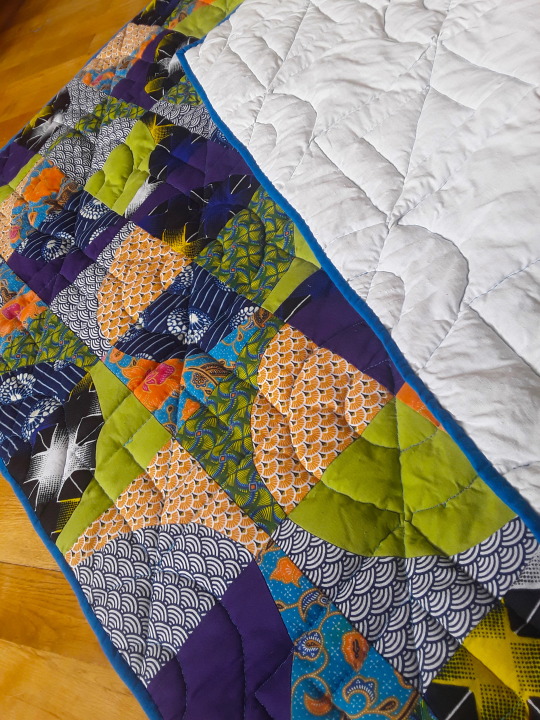
It's roughly 1.20 x 1.20m (which is a number of feet I can't be bothered to look up but let's say it's about child sized and it'll be great to chill on the couch).
I want to thank @langdon813 who I've never talked to (sorry if you hate being tagged) but whose gorgeous Drunkard path quilts made me wanna do it too :)
I had never done any quilting before (but I did sew), so here's what I've learned, if any beginner is interested in jumping off the deep end the way I did and wants advice from someone who has freshly acquired experience but will also not use any confusing technical terms (with pictures!) :
Fabric picking : so most advice I read was to go for pre-selected bundles of fabric that already go together, but I'm contrary and like to do my own thing so I used wax fabric (the blue ones on top the pile) I had laying around, which I strongly recommend: it's very easy to cut due to it being waxed, and I added a few fat squares from the shop, plus I also had the orange and blue floral and I based the coulour scheme on it. One thing that's true is it would have been easier to work with fabric of the same thickness, and the floral was givne to me by my ma who got in on trip to Thailand and it was alot thinner than the rest which didn't help.

Cutting: I got a rotary cutter for the occasion and it's great! Do not maybe push too hard on it and give yourself nerve damage the way I did (temporary but still), it's actually ery sharp and easy to use, so long as your template doesn't slip you're fine
Piecing :Yes you can do curved piecing even if you have zero experience, you just gotta make a template and
pin it a lot.
1/4 inch margins is the standard so I rolled with it because I don't like converting, but when you're strictly metric it is kind of annoying but doable because my machine does have a 1/4 inch mark and if you stick a length of tape along it it's pretty easy to follow, even for curved piecing.
Layout: At some point you've got to decide the layout is done, because I've re-arranged the blocks at least 6 times and it's a very good way to go insane. (For rough reference, my plan was to have no repeat fabrics in any of the circle-in-a-square blocks, and I only made one mistake which I clocked too late to change)

Chain piecing!! Meaning you pile your blocks together in a specific order (that I personnaly wrote straight up on each piece with a very sophisticated letter/numbers down/across system) and then just sew them together in a line without having to cut the thread between each pair. Looks a little like a fanion banner and at some point it feels like you'll be forever tangled into it but then it's magic :) It's not that hard actually and will save you a lot of time + there's a lot of online tutorials you can use.
Basting! (which it took me while to understand is the part where you attach the backing, the fluff and the quilt top together) : you need more safety pins. Safety pins will save you from the wrinkles and the unfortunate oopsies of realising you've caught your backing double folded into your quilting stitch, which I did a good three times and was not fun to undo. Also, I forgot to tape the backing to the floor and it probably would have helped with the wrinkling...
Backing : I used an old linen table cloth I got for 10€ at a charity shop, and I've still got about 2/3 of it left, so I recommend that, it's sturdy but soft enough, doesn't thread easily and can be washed at very high temps, if that's a thing you do.
Quilting! Well, my machine came with a quilting foot for free motion quilting (which means you're the one moving the fabric along in whichever direction and you can sort of draw with your stitches) and it seemed fun so I did that, and here's what I learned : curves are hard but doable, also my machine doesn't like to go back (kept skipping sitiches for some reason) so it involves a lot of shifting the quilt around, which isn't easy considering the bulk. And also, drawing the quilting pattern you want so you can follow it while quilting actually does help, I used an iron/heat-erasable pen and it worked just fine. Check your stitch tension, mine was too loose and I realised too late so there's spots where I could pull on the thread and it looped, had to stitch back over that.
Quilitng pattern : I wasn't sure what to do, supposedly your batting (aka: the fluff) comes with instructions on how tight you should quilt to avoid it coming apart through use but I got mine cut at the fabric shop and forgot to ask so I just rolled with a rough 10cm maximum distance in between stitching lines but tried to do less in most places. According to many blogs : the tighter your lines the stiffer your quilt, so I kept it loose for comfort. (Picture is halfway done, I added a smaller square/circle inside each square/circle and if you look at it you'll see it's actually diagonal lines form one end of the fabric to the other.)

Binding is boring, and there's nothing to it. I got a length of pre-cut bias binding, machine-sewed it front to front to the quilt top side of the quilt and the folded it back and secured it by hand to the back with a ladder stitch. Took me roughly and entire rewatch of the Last Of Us. There's a trick to doing the corners that's fairly simple but I've lost the tutorial...
Overall : I got myself a quilting book with techinques and such and it helped, but there's a ton of stuff online, and once you get over the very Christian American mum vibe of most of the blogs, it's all very helpful (and gorgeous!) (no offense meant to Christian American mums, it's just a bit of a culture shock from where I'm standing).
#quilting#quilters of tumblr#quiltblr#quilt tutorial#quilt pattern#quilt#drunkard path#home sewing#sewing#sewing project#beginner's quilt#beginner quilting
181 notes
·
View notes
Note
Got any newbie tips for dream game? I've been playin' for a few hours and I'm totally lost annnnd the wiki isn't very helpful
i'm not sure.. what tips to give whether you mean it lore understanding wise or gameplay wise so i'll try to keep it general.
BUT IF YOU HAVE SOMETHING MORE SPECIFIC IN MIND, PLEASE ASK THAT.. if you need help with something i am more than happy to show you in game.
i'm assuming that you're playing in a private server since that is the recommended way to play the game, public servers become more of a social game.
if you're looking for more of a lore understanding of what is going on in dream game, i'd have to recommend reading and looking at things around windy island before even sleeping as there is a good amount of information missing.
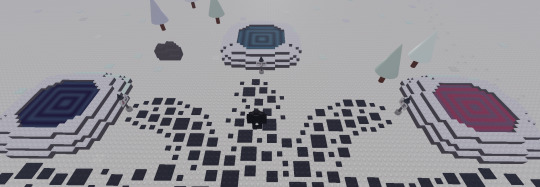
the pools outside of the 12th mansion allow you to force certain surface dreams to visit by changing the numbers on them to match a dream's code from left to write. these dream codes can be found around windy island but for convenience sake, these codes as well as the dreams that they correspond to can be found on this page of the wiki in surface dreams. when you insert the code correctly, a sound cue will play.
more under cut for sake of it's going to be a little long.
i'd also recommend if you're looking to explore certain depth dreams that you force the surface dream pink swamp ( which has a pond code of 1, 2, 7 ) to obtain a mysterious crystal.
and to obtain a mysterious crystal in pink swamp, they can be found in this cave.
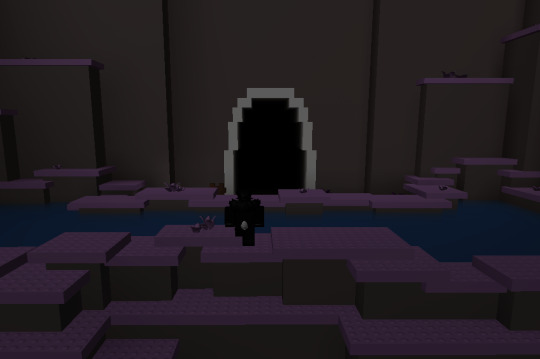
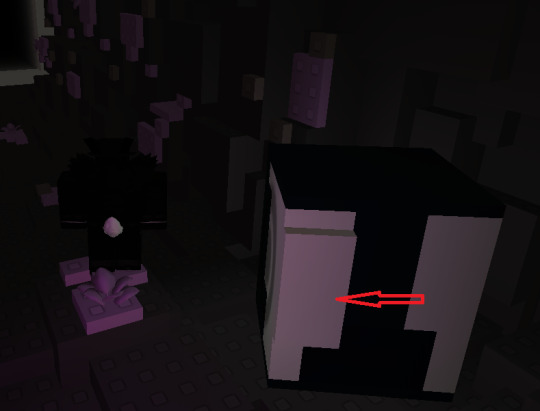
when you enter you'll find a the crystal machine giver, and interacting with this button will give you one crystal. obtaining certain badges will give you more ways to obtain crystals without having to constantly revisit pink swamp in one session but for now we'll keep it simple.
these mysterious crystals are used to put into depth orbs which will activate depth dreams which give you a sound cue upon activating them, so the next time you wake up and go to sleep, you will wake up in that respective depth orb's depth dream.
( example of what a depth orb looks like. some orbs might looks similar to depth orbs like the very large ones found in lower ten mou but arent actually )

i'd also recommend for exploration purposes that you obtain the pie in the dream ten mou, which is found in upper ten mou. it's kind of.. essential that you learn how to pie hike.

..my tip for pie hiking is to angle your camera down, it helps the pies get into a better / safer angle for you to stand on. you should also probably get used to changing the way that your character is standing / facing to get a better pie throwing angle as well as understanding where your pie will land if you threw it jumping or not.
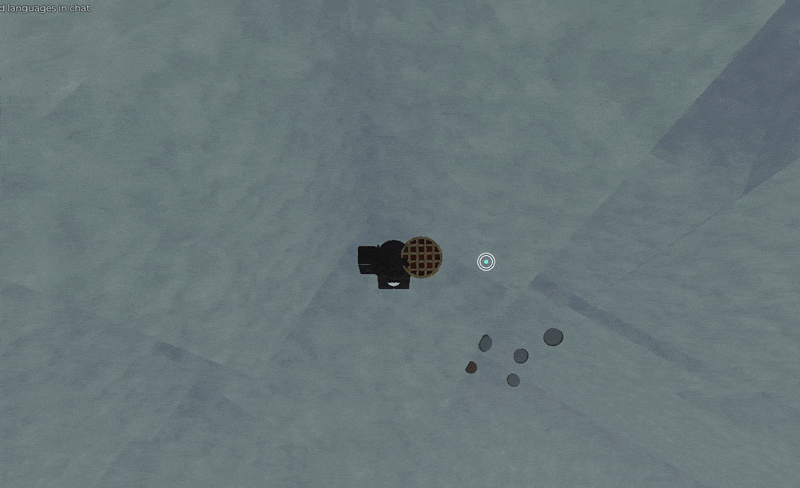
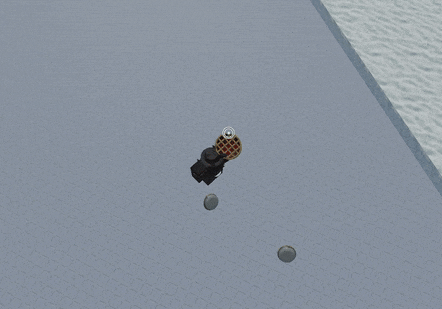
pies fall off after awhile so keep that in mind.
i am sort of running out of.. general tips, i dont want to get too specific as i dont want to pinhole you to a certain thing to do. so i have 2 last things.

i would recommend when you find your way to the main island in graveyard sea to purchase the x2 repose slice cake. reposes are everytime you wake up / go to sleep and you can use these reposes to purchase certain things.
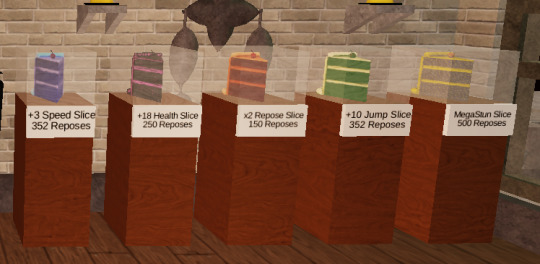
for example, these permanent upgrades. you of course are not required to obtain these, but they would be nice to obtain.
for last, if you are done mainly exploring.. from there you can aim for badges to obtain as MOST badges reward you with an item permanently.

these 2 badges are the ones beginners usually get. the ways to obtain these badges and every other badge can be found on the miraheze / wiki. there are also tutorials on youtube you can look up if you need visuals if the instructions are unclear.
while its encouraged to try exploring and figuring things out on your own, it's understandable if things get really confusing so it's okay to seek out guidance in these ways.
i'll reiterate that i'm.. unsure by what's meant by newbie tips but i hope these help. if you need something in specifics, please specify.
40 notes
·
View notes
Text

Yuuup.
But there are also ways it can immediately look more or less like that that aren't even about practice.
Knitting stockinette with a smooth yarn in a light color (something that is good for learning) will quickly show how much your tension does not match a machine's. But if you knit a fuzzy, dark yarn, it will be much less obvious. If you knit cables, they hide a multitude of sins. If you knit texture or colorwork, that too can often distract the eye from your actual tension.
Using a yarn that blocks well (wool) and giving it a good block will even out your stitches somewhat.
Using the trendy, trendy tubular cast on will give your project the look of a machine-made piece from a store. Doing a folded over collar will have the same effect.
Using thin yarn at a relatively tight gauge looks more like something from a machine. Many beginner tutorials suggest using some jumbo yarn no one actually wants to wear and that makes your project look very, very hand-made in the potentially bad way.
Honestly, someone who's feeling bad might want to try a basic cable or lace or texture pattern. Those aren't actually all that hard, but they make your knitting look like it was hard. This could be much more encouraging than trying to make what a machine usually does and then noticing you're not a machine.
60 notes
·
View notes
Text
HELLO @okartichoke I AM HERE WITH MOSSY'S GUIDE ON HOW TO START SEWING: A VERY MESSY TUTORIAL
I am extremely self taught, so this is gonna be a lot of links and infodumping!!!! Hopefully this helps a even just a little bit :>
SO! I honestly got into sewing through youtube during covid, largely bc i wanted silly fun clothes! There are a loooot I could recommend to you out there, but I personally find that the more chaotic and learn-as-they-go people help me the best! Rachel Maksy and The Stitchery are, to me, some of the best to learn from! Which is honestly pretty funny since they tend to just fully wing it most of the time lol. While i could recommend excellent sewists like the amazing Bernadette Banner (who is actually the first sewing channel I watched!), I find that the more loosey goosey the process, the more i can learn, if that makes sense? I find it helpful to watch people trial-and-error their way through projects and show where they succeeded and failed since I get a better grasp on their process that way.
The best way to start sewing, in my humble opinion, is to grab whatever sewing machine you can get your hands on and play around with it! Read the manual, find a tutorial video on how to thread the machine, grab some scrap fabric and play around! You don't really need any special needles or feet (the little thing that holds the fabric down), unless you wanna get started sewing denim or velvet or something Speaking of which, learn about fabrics!!!!! I learned mostly by going to joanns, touching the fabrics, and looking at the content labels. Everything has different uses, and while two things might both be cotton, one could be knit while the other jersey (tshirt fabric). I like this video for learning the basics! Tbh this one took me a while. Usually patterns have recommendations for what fabrics to use, so that's always a good place to start!
Patterns. Ah my arch nemesis. Unless you decide to start drafting your own patterns (or get a mannequin and learn how to drape fabric), you're probably gonna need to use one. There's two major things i recommend for this: 1) Make sure there's a video tutorial online before buying, and 2) start with something you might actually use/wear. Pattern instructions are notoriously vague, but thankfully many wonderful people make video tutorials for them! And while you might be tempted to grab one of those beginner friendly patterns, they can sometimes be. real ugly and not well fitting. Also boring! Finding something you like will hold your attention better and make you actually wanna finish it!
Ok SO. getting into more of the cosplay sewing stuff. First things first my knowledge here is a bit more limited, unfortunately. Fortunately there are many wonderful people out there with tutorials!! So if you wanna learn more definitely look there!!! General tip for cosplays + more complex sewing: MAKE MOCK UPS PLEASE IT SUCKS BUT IT HELPS SO MUCH. Go find the ugliest fabric in the sale bin and buy a few yards, then use it whenever you wanna test patterns. It might be tempting to immediately start cutting and sewing the finished garment, but the truth is that patterns rarely fit perfectly well (especially if they're fitted/tighter on your body). Make an ugly, barebones version first with your bad fabric, take notes, and then start making the finished piece. It'll save you money and sanity.
As for cosplay youtubers, I heartily recommend Sarah Spaceman, since not only do her videos show her process, she also does segments teaching you more about sewing!! She tends to tackle more complex projects, and watching her take those on has helped me a lot :} For cosplay patterns etsy usually has quite a few! I like Indigo Patterns (they have a good array of loz patterns I need to buy) as well as Alice in Cosplay Land. Please note that I haven't bought from either, but both their etsy shops have wonderful reviews and I plan to buy from them in the future!
not gonna lie I am getting very sleepy so I'm gonna cut it off there for now! Hopefully my rambling helped lol. Feel free to ask me any questions or for any clarification!
#wowie this is longer than I thought#and i didnt even get into any specifics#tbh my whole method for learning things is mess around and find out#you'll only get better once you start!!!#it looks really daunting at first#but you gotta start sometime!#the time will pass anyways#anyways you're more than welcome to dm me with any questions!!!#i will do my best to answer them :]#I was gonna include pictures of my projects and mockups#but *apparently* i deleted them all for some stupid reason#and i'm currently trying to finish all my half done projects before I start any more#so no pictures for now 😔#mossy’s sewing adventures#sewing#mossy talks
29 notes
·
View notes
Text
New Things to Learn in 2025
THE ARTS:
Try Writing, by Kieren Westwood on YouTube: How to Start Writing for Beginners - Start Your Story
Try Bookbinding, by Four Keys Book Arts on YouTube: Bookbinding Basics: Chapter 1 - Basic Tools - Easy Options to Get Started Bookbinding
Photography Basics, by David Manning on Youtube: PHOTOGRAPHY BASICS in 10 MINUTES
Try Filmmaking, by Camp Films on YouTube: The Basics of Cinematography - Filmmaking for Beginners
Try Embroidery, by Jamie.Photo on YouTube: Hand Embroidery 101 | Beginners Guide to Embroidery, Stitch Tutorials, and Pattern!
Try Knitting, by RJ Knits on YouTube: How to Knit: Easy for Beginners
Try Crochet, by simplydaisy on YouTube: How to Crochet for Absolute Beginners: Part 1
Try Sewing (with a sewing machine), by coolirpa on YouTube: A Beginner's Guide To SEWING! How to use a sewing machine
Try Sewing (by hand), by Cutesy Crafts on YouTube: How to Sew by Hand for BEGINNERS!
FITNESS:
Try Yoga, by Yoga with Adriene on YouTube: 30-Minute Yoga For Beginners | Start Yoga Here…
Try Pilates, by Move with Nicole on YouTube: 30 MIN FULL BODY WORKOUT || At-Home Beginner Pilates (No Equipment)
Try a full body workout, by growingannanas on YouTube: 25 MIN FULL BODY HIIT for Beginners - No Equipment - No Repeat Home Workout
Try a Dance Workout, by The Fitness Marshall on YouTube: FREE 30 Minute Sweat Session | DAY 2 - January Challenge
DANCING:
Try the Waltz, by LearnToDance on YouTube: How To Waltz Dance For Beginners - Waltz Box Step - YouTube
Try the Swing, by Passion4dancing on YouTube: How To Swing Dance For Beginners (East Coast Swing)
Try “Club” Dance Moves, by Get Dance on YouTube: Club Dance Moves Tutorial For Beginners Part 1 (Basic CLUB DANCE Step For Guys) Heel in
Try Line Dancing, by West Coast Country on YouTube: Beginner Line Dance Lesson - Cowboy Hustle
SCIENCES:
An Introduction to Physics, by The Organic Chemistry Tutor on YouTube: Physics - Basic Introduction
An Introduction to Biology, by Wacky Science on YouTube: BIOLOGY explained in 17 Minutes
An Introduction to Chemistry, by Wacky Science on YouTube: GENERAL CHEMISTRY explained in 19 Minutes
An Introduction to Psychology, by CrashCourse on YouTube: Intro to Psychology: Crash Course Psychology #1
An Introduction to Cooking, by Home Cook Basics on YouTube: How to Learn to Cook | Cooking for Beginners
An Introduction to Gardening, by Dig, Plant, Water, Repeat on YouTube: Gardening for Beginners Series: Gardening Basics for Beginners
An Introduction to Herbology/Herbalism, by Honeystead on YouTube: Herbalism- How to get Started?!?
LANGUAGES:
Try a language learning app, Duolingo: Duolingo - The world's best way to learn a language
Learn Beginner Italian, by Italy Made Easy on YouTube: Beginner Italian Course Lesson 1 - The basics of learning Italian the right way
Learn Beginner Spanish, by The Language Tutor on Youtube: How To Pronounce Letters In Spanish | Lesson 1
Learn Beginner French, by The Language Tutor on Youtube: Master the French Alphabet in Minutes
Learn Bird Sounds, by Lead with Nature on YouTube: How to Mimic Bird Sounds
Learn ASL, by Learn How to Sign on YouTube: Learning ASL? Learn This FIRST!!! (10 Things You Need to Know About ASL)
FREE ONLINE LIBRARIES & TEXTBOOKS:
Internet Archive: Internet Archive: Digital Library of Free & Borrowable Texts, Movies, Music & Wayback Machine
Project Gutenberg: Free eBooks | Project Gutenberg
Connect with your local libraries: Libby - Welcome
Free Textbooks: OpenStax | Free Textbooks Online with No Catch
~~~~
Original Idea by @hamletthedane
Please add any other resources you may have!

14 notes
·
View notes
Text
AI Deep Learning Online Course: Mastering Advanced Techniques
Embarking on an AI deep learning online course is a transformative journey for students and professionals alike. Deep learning, a subset of artificial intelligence (AI), focuses on training algorithms to learn from data and make intelligent decisions, mimicking the human brain's neural networks. This guide explores the importance of deep learning education, key concepts covered, choosing the right course, popular platforms, and career opportunities in this dynamic field.
1. Introduction to AI Deep Learning Online Course
Diving into the realm of deep learning through an online course provides a structured pathway for individuals keen on mastering advanced AI techniques. These courses offer comprehensive insights into neural networks, convolutional neural networks (CNNs), recurrent neural networks (RNNs), and generative adversarial networks (GANs), among other cutting-edge technologies shaping AI innovation.
2. Importance of Learning AI Deep Learning
Deep learning plays a pivotal role in modern AI applications, from image and speech recognition to autonomous vehicles and healthcare diagnostics. Understanding and applying deep learning principles are essential for driving innovation and solving complex problems across various industries, making specialized education in this field highly valuable.
3. Key Concepts Covered in AI Deep Learning Courses
AI deep learning courses typically cover fundamental and advanced concepts:
Neural Networks: Building blocks of deep learning models that mimic the human brain's structure.
Convolutional Neural Networks (CNNs): Specialized for image and video analysis, enabling tasks like object detection and image classification.
Recurrent Neural Networks (RNNs): Effective for sequential data processing, used in natural language processing and time series prediction.
Generative Adversarial Networks (GANs): Used for generating new data instances, enhancing images, and creating realistic simulations.
4. Choosing the Right AI Deep Learning Course
Selecting the right AI deep learning course involves considering several factors:
Course Structure: Evaluate the course outline, modules, and learning objectives to ensure they align with your learning goals.
Instructor Expertise: Choose courses led by experienced professionals with practical industry experience in deep learning.
Platform Credibility: Opt for reputable online learning platforms like Coursera, edX, Udacity, and specialized AI academies known for their high-quality courses.
Hands-On Projects: Look for courses that offer hands-on projects and practical exercises to reinforce theoretical concepts and enhance learning outcomes.
Student Reviews: Read reviews and testimonials from past learners to gauge the course's effectiveness and relevance.
5. Popular Platforms for AI Deep Learning Courses
Explore leading platforms offering AI deep learning courses:
Coursera: Offers courses from top universities and industry experts, including deep learning specializations.
edX: Provides courses in collaboration with prestigious institutions like MIT and Microsoft, focusing on AI and machine learning.
Udacity: Known for nanodegree programs that combine theoretical knowledge with hands-on projects mentored by industry professionals.
6. Course Curriculum and Learning Objectives
A typical AI deep learning course curriculum includes:
Introduction to Deep Learning: Basics of neural networks and deep learning frameworks.
Advanced Topics: CNNs, RNNs, GANs, and their applications in image recognition, natural language processing, and more.
Practical Applications: Hands-on projects to implement deep learning algorithms and analyze real-world datasets.
7. Hands-On Projects and Practical Exercises
Hands-on experience is crucial for mastering AI deep learning techniques:
Image Classification: Implementing CNNs to classify images and improve accuracy.
Natural Language Processing: Building RNN models for sentiment analysis and language generation.
GANs Projects: Creating realistic images or videos using generative adversarial networks.
8. Career Opportunities in AI Deep Learning
AI deep learning expertise opens doors to diverse career paths:
Data Scientist: Analyzing large datasets and developing predictive models using deep learning techniques.
Machine Learning Engineer: Designing and deploying machine learning systems for automated decision-making.
AI Researcher: Conducting groundbreaking research in neural networks and advancing AI technologies.
AI Specialist: Consulting on AI projects and implementing solutions across industries.
9. Student Success Stories and Testimonials
Real-life examples of students benefiting from AI deep learning courses:
Career Advancement: Securing roles at leading tech companies and research institutions.
Skill Enhancement: Applying deep learning knowledge to solve complex problems and innovate in AI applications.
Networking Opportunities: Connecting with industry experts and peers through course communities and events.
10. Conclusion
Enrolling in an AI deep learning online course equips you with the knowledge and skills to thrive in the rapidly evolving field of artificial intelligence. By choosing a reputable course, engaging in hands-on projects, and leveraging practical experience, you can accelerate your career growth and contribute to cutting-edge AI innovations.
Closing Thoughts
Investing in AI deep learning education is an investment in your future, empowering you to tackle global challenges and drive technological advancements. Start your journey today by exploring AI deep learning courses that align with your goals and aspirations, and embark on a fulfilling career in artificial intelligence.
#AI Mastery course online#Learn AI for students#Online artificial intelligence course#AI training for beginners online#Advanced AI course for students#Best AI courses online#AI certification for students#Artificial intelligence classes online#AI courses for college students#AI and machine learning training#Online AI development course#AI programming course online#AI deep learning online course#Top AI courses for students#AI specialist training online#Best online course for AI mastery#Artificial intelligence for beginners online#AI algorithms course online#Machine learning basics online#Online AI projects for students#Introduction to AI online course#AI ethics course online#Online AI tutorials for students#AI and data science online course#Online AI bootcamp for students#Best AI training program online#AI career path online#AI masterclass online#Online AI education for students#AI technology course online
0 notes
Note
Are there any arts and crafts that you recommend?
It's all up to personal taste but here's some off the top of my head.
You probably have the means to do this at home rn
Drawing, just grab a pencil or pen and a piece of paper and doodle, draw shapes! You can do abstract stuff or geometric patterns or stuff like mandalas that you can color later, it doesn't have to be a masterpiece.
Paper crafts in general. Collage. Scrapbooks. Greeting/birthday cards. Origami - I personally really like folding birds and cranes.
Inexpensive/not too expensive (to my knowledge)
Coloring books, I don't personally like coloring but I follow people who enjoy this and I've seen really cute coloring from them. You can color with crayons, markers, pencils. Whatever you like.
Sewing* (beginner :tm:) learn stitches to fix your clothes and things. It's really rewarding long term. Once you know your stitches you can learn to make lil things like simple plushies with scrap fabric.
Embroidery*. Well, if you start sewing you got needles now! congrats, you can try embroidering. I absolutely recommend an embroidery hoop because it will make things a lot easier, it can also help with mending clothes. You'll need some scrap fabric that's fit for the job but when it comes to threads, to start, you can pretty much use whatever - I've used all sorts of yarn and sewing threads.
Jewelry making. There's different materials both for the beads and the thread so prices vary but it's nice and it's something you can do for yourself or for gifting.
*by hand.
You really gotta buy stuff for this (but maybe someone you know can lend you some of it to practice and see if you like it? or they could be down to teach you, who knows.)
Crochet.** You need yarn and the correct crochet needle/hook to crochet. There's a lot of begginer friendly tutorials so the learning process isn't too terrible. I've made amigurumis and coasters. Lots of people make blankets out of granny squares (and there's tons of free patterns online!)
Knitting.** I haven't personally tried this one but same as above. And again, tons of free patterns online.
Sewing (machine :tm:). My sister has a sewing machine and she's done tons of things. It's a more expensive hobby though since you have to invest more and learn how to properly use the machine but you can make stuff faster than you can by hand. It really makes sewing clothes together a lot easier.
**you will def find blogs and videos with tutorials but I also recommend ravelry because it let's you filter results and people sometimes rate how easy/hard patterns are.
Other stuff that I've done once or twice: paper mache, sculpting, stamps! and stamp making, mosaics, flower pressing, stencils, watercolors, acrylics, canvas painting, embossing... and I'm probably forgetting some.
#anon#ask#reply#sorry this got long but my family has had lots of arts and crafts phases so ive tried tons of things / have supplies for many available
7 notes
·
View notes